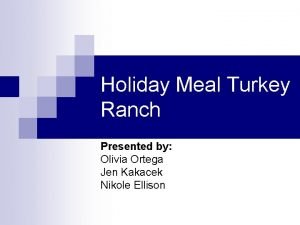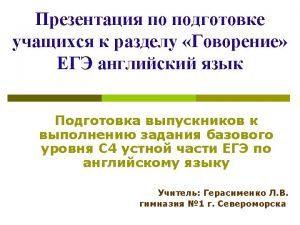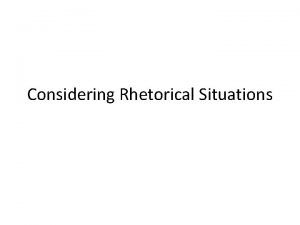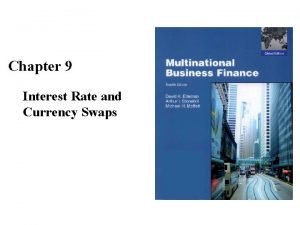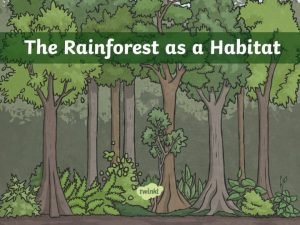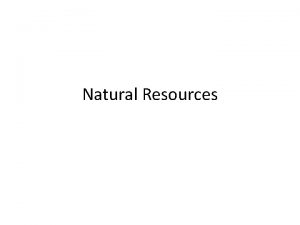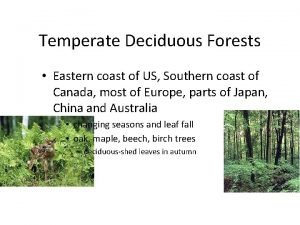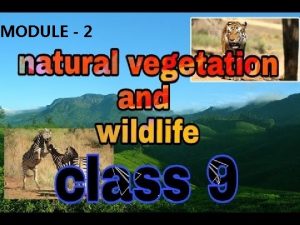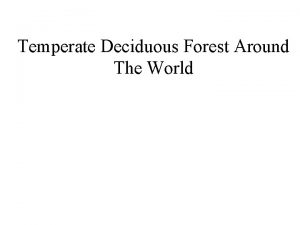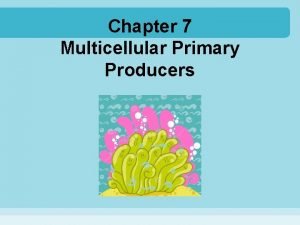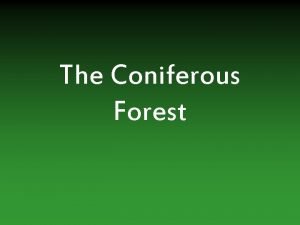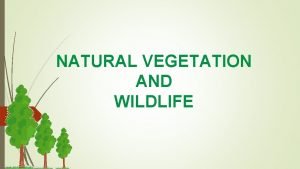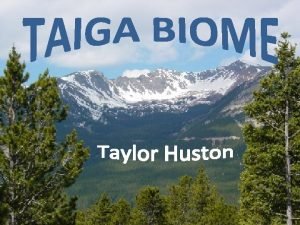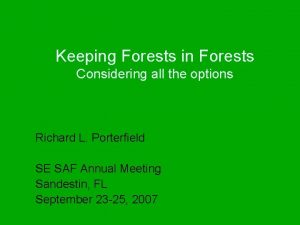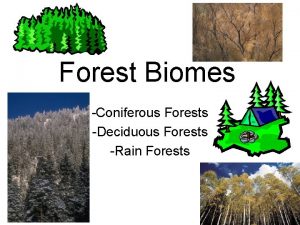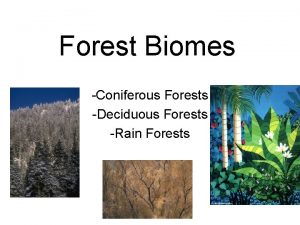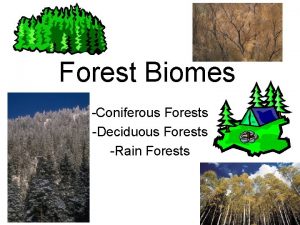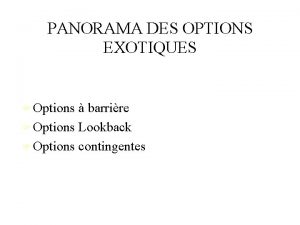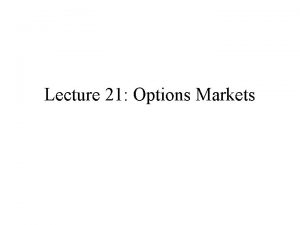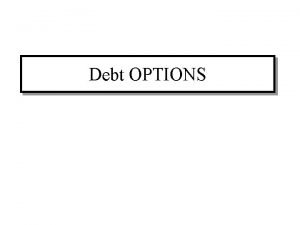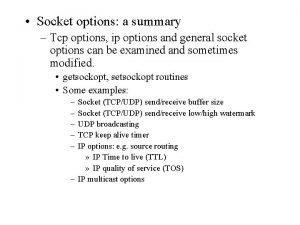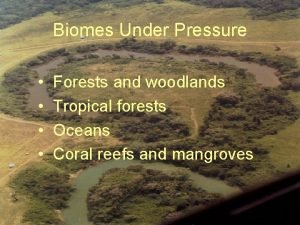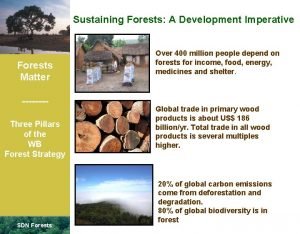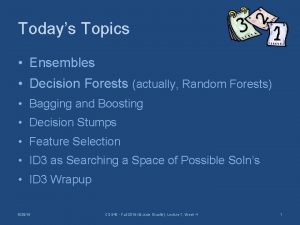Keeping Forests in Forests Considering all the options



















- Slides: 19

Keeping Forests in Forests Considering all the options Richard L. Porterfield SE SAF Annual Meeting Sandestin, FL September 23 -25, 2007


The Dawg Factor • Expected net return from holding forest land.

The Gator Factor • Expected net returns from alternative uses of forest land or from the cash produced by the sale of the forest land.

The Tiger factor • The net “psychic” value associated with forest land ownership.

Keeping forests in forests 1. Expected net returns from forest land. (Dawg) 2. Expected net returns from alternative non-forest use of land/cash equivalent. (Gator) 3. Net “psychic” value from forest land ownership. (Tiger)

To keep forests in forests Ø Increase the Dawg factor. Ø Decrease the Gator factor. Ø Increase Tiger factor.

Forest Ownership Most Significant Change • Traditional forest industry has sold nearly all its forest land or converted to REIT structure. – Declining value of stumpage. – Abundant non-company timber. – High return uses for capital elsewhere. – Need to pay down debt. – Inability to monetize the forest land asset.

So, • Forest industry ownership has decreased significantly. • TIMO forest land ownership has increased significantly. • Non-Industrial (non-business) private forest land ownership has increased significantly. • Public forest land ownership has increased slightly.

New non-business private forest landowners: • • Are younger. Are better educated. Own, on average, somewhat smaller forest tracts. Value aesthetics and legacy of forest landownership much more than previous nonbusiness private forest landowners. • Are more likely to have a management plan. • Are still harvesting timber.

Conservation easements: § Increase the Dawg factor, decrease the Gator factor and may increase the Tiger factor for some forest landowners. § But may be viewed as reducing future options and/or represent loss of control to other forest landowners.

Land use planning, sometimes in the form of zoning, typically reduces the Gator factor. • Can be used to identify forest land for public purchase. • In the form of zoning, viewed as “for the greater public good”. • Can raise the “take” issue.

There is a long history of forestry incentive programs and they typically increase the Dawg factor. • CRP very successful example. • Are one way to pay for environmental service values/social benefits from forest land. • May reduce operating costs or increase returns. • Often involve tax reductions.

Possible New Incentive Program and New Product Market • Direct payment for non-market forest resources (water, recreation, habitat, aesthetics, etc. ) increases the Dawg factor. • Development of new products/markets (e. g. carbon sequestration credits) increases the Dawg factor.

But the Tiger factor may be most important to many, if not most, new non-business forest landowners. • An opportunity foresters?

Take advantage of all the methods and means of increasing the probability that forests stay in forests offered at this meeting.

For millions of forest land acres owned by TIMOs, REITS, forest industry and many non-business private forest landowners a traditional forest management plan focused on timber production will be needed. But for additional millions of forest land acres owned by an emerging majority non-business private forest landowner a forest resources management plan based primarily on nontimber resource goals may well be best.

Now more than ever, keeping forests in forests will require foresters to: ü Have comprehensive knowledge of all forest resources and how to manage to favor each. ü Have excellent communication skills not only to explain resource tradeoffs but to better understand forest landowner desires/goals for ownership. ü Have the ability to show value (both market and non-market) from forest land ownership. ü Likely monitor fewer logging operations and make more dreams come true.

Keeping Forests in Forests Ø The best result of all these ownership changes is that only a professionally trained forester can deliver the dreams envisioned by so many new forest landowners. Ø The opportunities foresters may never have been greater than they are today. Ø Good luck to you all.
 Draw three noncollinear points j k and l
Draw three noncollinear points j k and l Imperial jewelers is considering a special order for
Imperial jewelers is considering a special order for Holiday meal turkey ranch problem
Holiday meal turkey ranch problem Johnny's lunches is considering purchasing a new
Johnny's lunches is considering purchasing a new Study the advertisement you are considering
Study the advertisement you are considering You are considering buying some flowers
You are considering buying some flowers Rhetorical situation define
Rhetorical situation define Considering interestrate swaps, the swap rate is
Considering interestrate swaps, the swap rate is Very dense, warm and wet forests.
Very dense, warm and wet forests. Materials or substances such as minerals forests
Materials or substances such as minerals forests 12 forest of vrindavan
12 forest of vrindavan Characteristics of temperate deciduous forest
Characteristics of temperate deciduous forest Tropical thorn forests and scrubs
Tropical thorn forests and scrubs Deciduous forests around the world
Deciduous forests around the world Multicellular producers
Multicellular producers Apes frq 2014
Apes frq 2014 Define coniferous forest
Define coniferous forest Forests
Forests Temperate deciduous forest biome animals
Temperate deciduous forest biome animals Description of a taiga
Description of a taiga


